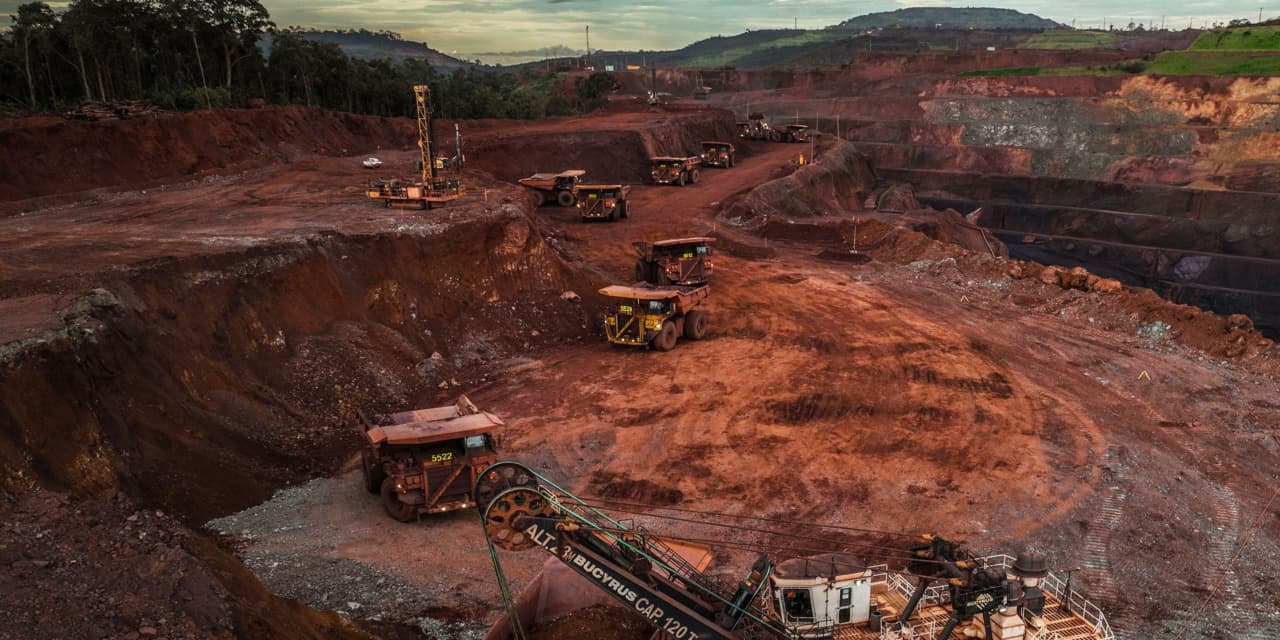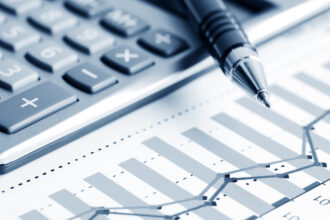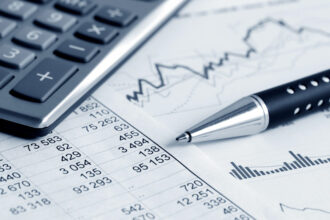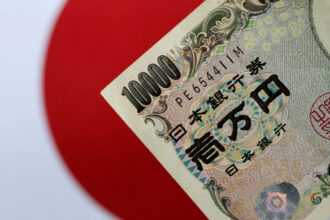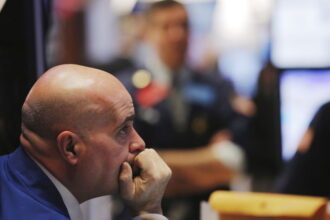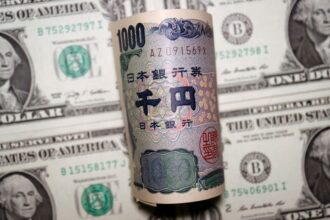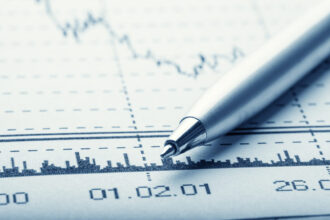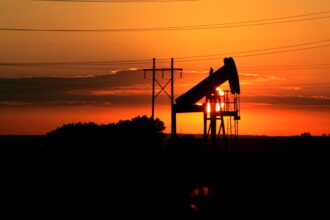Until now, global climate policy has been symbolized by Davos parties and carbon pledges so far in the future that the bill may never come due. But starting this month, countries spewing harmful fumes will have to consider the cost, as Europe rolls out the first-ever carbon-based tariff. There’s also a good chance the fees will lead to inflation in products that are made with fossil fuels.
Imports to Europe will now face a tax based on carbon emissions caused by manufacturing. Initially, the tariff will hit industrial materials the hardest, but companies as varied as
PepsiCo
(ticker: PEP) and dialysis firm
Davita
(DVA) have told investors that the new rules could eventually affect their businesses.
“The consequences will be vast,” wrote Elena Belletti, head of carbon research at energy research firm Wood Mackenzie, in a recent report. She thinks the rules will “reconfigure international trade flows” over the next five years, and potentially result in new carbon fees going into effect in more countries.
European policy makers say the system, known as the Carbon Border Adjustment Mechanism, has two goals: encouraging more countries to write laws that reduce emissions, and making sure that European manufacturers stay competitive with rivals operating in “dirtier” jurisdictions.
Companies subject to the border tax won’t have to pay up immediately. For now, the European Union is just asking them to submit records of emissions used to make their goods. Taxes won’t be collected until 2026, and fees will go up gradually until they’re equal to EU carbon prices in 2034.
Industries affected in the first round include some of the largest carbon emitters: cement, iron and steel, aluminum, fertilizer, electricity, and hydrogen. Oil products aren’t yet included, though they’re expected to be added by 2030. By 2040, S&P Global Commodity Insights thinks the tax could bring in $80 billion per year.
Europe is known for far-reaching regulations in technology, privacy, health, and the environment. As with other European regulations, critics have argued that the carbon tariff stifles growth and unfairly targets foreign corporations. Chinese, Brazilian, and Indian officials have warned that it could upend free trade. The U.S. has reportedly asked for exemptions.
To economists, though, carbon taxes and border tariffs aren’t controversial. Dozens of Nobel Prize–winning economists, along with policy makers, signed a 2019 letter recommending that the U.S. impose them because they’re “the most cost-effective lever to reduce carbon emissions at the scale and speed that is necessary.” In economist-speak, carbon is an “externality” that most companies emit without considering—or covering—the costs that will come tomorrow. “What we’re doing by putting carbon in the atmosphere is we’re imposing costs on future generations, where the climate is going to be a lot worse,” says New York University’s Robert Engle, one of the Nobel economists who signed the letter.
Carbon taxes put a cost on emissions and give incentives to emitters to clean up. In countries that have their own carbon taxes—and the EU has them—a tariff is needed so domestic companies aren’t put at a disadvantage to foreign rivals, Engle says.
Since the 2015 Paris Climate Accords, countries have taken a range of approaches to meeting the goal of limiting global warming to 1.5 degrees Celsius. The U.S. has leaned heavily on subsidies for renewable energy and electric vehicles, including in last year’s Inflation Reduction Act. A few states like California impose a form of carbon tax or have announced targets that tend to be nonbinding from a legal perspective.
Similar to the U.S., the EU has used subsidies to spur development of clean energy. But unlike the U.S., the EU has also devised a legally binding regulatory regime to cut emissions. The European Parliament approved a law this year that will make the group reduce carbon emissions by 55% by 2030 from 1990 levels. The EU created a kind of carbon tax in 2005 that capped the total number of allowable carbon emissions from regulated companies and forced them to pay for any above those levels. The rules created a carbon-credit market, and costs have risen as the limits have gotten stricter.
Other countries also tax carbon for companies within their borders, but with rates that tend to be much lower. For most of 2023, EU carbon prices have been above $100 per metric ton, four times as high as the average country that imposes similar taxes, says Wood Mackenzie. For companies in countries with carbon taxes, those taxes will be discounted from the EU border tax. A Canadian steel maker exporting products to the EU could deduct taxes paid in Canada from their bill.
The countries that export the highest volume of steel and other affected products to Europe include Canada, Turkey, South Africa, Brazil, China, and India, according to S&P Global Commodity Insights. The U.S. ranks tenth, with relatively large iron, steel, and fertilizer exports to Europe.
Those countries are also expected to produce the most carbon emissions from the affected categories, according to S&P Global. That said, countries could reduce their bills significantly if they implement their own carbon taxes or if companies invest in cleaner methods of production. U.S. steel giant
Nucor
(NUE) recently announced a partnership to produce steel using nuclear power.
Wood Mackenzie did the math on the tax using steel as an example. A metric ton of steel imported into the EU cost about $1,450 at the end of last year; the full border tariff could average $275 on that. Some countries could see higher bills, however. The tax could hike the cost of Chinese steel by 49% by 2034, and Indian steel by 56%, estimates Wood Mackenzie. That reflects the two countries’ heavy carbon emissions.
Those big bills aren’t coming due for years. The challenge now is to tabulate the emissions. “Like everything else, it starts with measurement,” says Roman Kramarchuk, who leads a group analyzing the impact of the transition on energy companies for S&P Global Commodity Insights.
Major metal and fertilizer makers have not spoken much about the new rules. Heavy industry is difficult to decarbonize, because making products like steel takes high and persistent heat that’s normally provided by burning coal or natural gas.
Fertilizer maker
CF Industries
(CF) warned in its latest annual report that clean ways of producing ammonia may not be fully developed for a decade or more. “The imposition of any carbon border-adjustment taxes may impact investment and trade flows, which could adversely impact our business,” the company said. Large metals companies, including
Vale
(VALE),
BHP
(BHP), Nucor,
Alcoa
(AA), and
Reliance Steel & Aluminum
(RS), didn’t respond to requests for comment on estimated costs from the tariffs.
While some companies will be hurt by the tariff, others will benefit. One area that analysts cite as a beneficiary is clean hydrogen, a still-nascent industry unlikely to see mass adoption for several years. Among the companies developing it in the U.S. are
Plug Power
(PLUG) and
Bloom Energy
(BE).
Two important things could happen before the border tax gets collected. First, companies may shift exports, so their “cleanest” metal ends up in Europe and the rest is exported elsewhere, Kramarchuk says. Second, more countries may enact their own carbon taxes, protecting their manufacturers and speeding up decarbonization. In the U.S., Republicans have tended to oppose carbon taxes. But Sen. Bill Cassidy (R., La.), argued earlier this year for what he calls a “foreign pollution fee” aimed at Chinese chemicals, metals, and other products. Such a fee “curtails China‘s ability to undercut U.S. manufacturers,” he wrote.
Environmentalism and protectionism are potent forces. They’re coming together now in Europe. They may not end there.
Write to Avi Salzman at [email protected]
Read the full article here


